Project 1: Investigation of the WAVE complex as a master regulator of cellular homeostasis and functional reprogramming
We explore the potential of actin dynamics regulators as novel therapeutic targets to modify disease progression.
The WAVE complex is a hetero-pentameric protein complex (WAVE, NCKAP, CYFIP, ABI, and BRK1), in which the WAVE subunit activates Arp2/3 complex-mediated actin polymerization, and others are considered regulatory subunits.
Actin polymerization and cytoskeletal dynamics regulate diverse cytoplasmic, membrane, and nuclear processes, positioning the WAVE complex as a key molecular hub that controls the functional states of brain cells, including neurons and microglia.
We aim to develop novel therapeutic approaches for Alzheimer’s disease based on our accumulated insights into the molecular and cellular mechanisms of WAVE1 function in the brain
We are currently investigating WAVE1 as a key modulator of Alzheimer’s disease pathology. Our published study (PMID: 26280122) demonstrates that WAVE1 regulates APP (amyloid precursor protein) trafficking and Aβ production.
Our unpublished results indicate that WAVE1 regulates tau hyperphosphorylation. WAVE1 deletion exerts protective effects against both Aβ and tau pathologies, supporting its potential as a therapeutic target.
Project 2: Investigation of the Ahnak/p11/Annexin A2 complex as a key regulator of neurotransmission as well as brain-immune axis.
S100a10 (also known as p11) regulates depressive-like behavior and mediates antidepressant responses (PMID:16400147, PMID: 24002251). Previous studies of p11- binding partners have established its role in serotonergic and glutamatergic transmission, as well as calcium signaling in the brain.
Studies of p11 and its binding partners have elucidated molecular mechanisms underlying the antidepressant-like effects of SSRIs, mGluR5 antagonists, and ketamine (PMID: 36046712; PMID: 23415230; PMID: 26370144; PMID: 38828281)
For the first time, we proposed that disinhibition of GABAergic interneurons underlies the mechanism of fast-acting antidepressabt-like effects of mGluR5 antagonists (PMID: 26370144).
Ahnak is an endogenous regulator of the trafficking of L-type voltage-gated calcium channels, genetic polymorphisms of which have been implicated in major psychiatric disorders, including major depressive disorder and schizophrenia (PMID: 30760886)
Ahnak regulates depression-like behavior in distinct neuronal populations and is essential for the rapid antidepressant-like effects of ketamine(PMID: 38828281; PMID: 35813065; PMID: 30760886).
We are currently studying novel roles for Ahnak in the blood-brain barrier in the regulation of peripheral and central inflammation in the context of the pathophysiology of psychiatric disorders and neurodegenerative diseases.
We are currently studying novel roles for Ahnak in regulating neuroinflammation and contributing to the pathophysiology of Alzheimer’s disease.
Our current research focuses on developing novel therapeutics targeting p11 and its binding partners for psychiatric and neurodegenerative disorders using an AI-assisted drug screening platform
Project 3. Exploring a New Research Paradigm with an artificial intelligence (AI)-Assisted Drug Screening Platform
Traditional molecular and cellular neuroscience research using animal models is inherently slow, and even when successful, often fails to translate effectively to human brain disorders and therapeutic development. This represents a fundamental limitation of the current preclinical research paradigm.
To address this gap, we are adopting a new research framework that leverages an artificial intelligence (AI)-assisted drug screening platform to accelerate the transition from basic discovery to clinical application.
We are currently validating this approach using hub molecules identified from our prior research, with the goal of establish proof-of-concept that (1) our molecular targets and drugging strategies are clinically actionable, and (2) AI-predicted compounds demonstrate efficacy in relevant disease models.
Other Projects
Investigation of SUPT6H and its genetic alterations in neurodevelopmental disorders.
SUPT6H is a key transcriptional regulator with dual functions as an elongation factor and histone chaperone. Previously, we identified SUPT6H as an interactor of p11.
We aim to establish the contribution of SUPT6H alterations to the pathogenesis of neurodevelopmental disorders by identifying disease-associated mutations and characterizing neuronal cell-specific Supt6 knockout mice.
Investigation of the function of neuronal hemoglobin in chronic stress-induced behavioral adaptation.
Altered cerebrovascular networks have long been recognized as a potential modulator of neuronal function in response to stress. However, it is not well understood how neurons sense chronic stress-induced cerebrovascular dysfunction and maintain circuit homeostasis and behavioral responses.
We investigate the role of neuronal hemoglobin (Hb) to uncover a molecular pathway directly conveying chronic stress-induced cerebrovascular changes to functional pathways in a subtype of neurons in the hippocampus and behavioral consequences.






